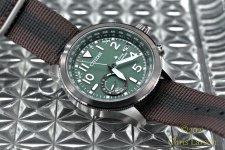BF Hammer
Senior Member
So you guys are saying that I should be shooting at f12 minimum to get good/sharp results. If so I'll try that when I take the lens out again. I usually keep the focus point in the middle, unless I'm doing bif or something. Then I choose group. I shoot the lens hand held and no flash.
Thanks for the tips/advice. I'll try some and report back. Hopefully with good news.
Whoa, shooting macro handheld with no flash?!? You are guaranteed to have DOF problems. It only takes a couple of millimeters of forward motion after locking focus to throw it off. Most macro work is done with tripods for just that reason.
Also, I used a D7000 prior to getting my D750, so I know you should be able to program that button in front of the body to be a tradition depth-of-field preview function. It will close the aperture down to the shooting setting so you can see what the DOF is in viewfinder before taking the photo. That is how I have my DSLR bodies setup anyhow.
I dug up a different watch photo that is actually on my laptop I'm working on now. This one has a large dial and the exif info will show that I shot at f/16. Also notice that the extreme front part of the dial and the extreme rear edge are out of focus at that f-stop and my working distance.


